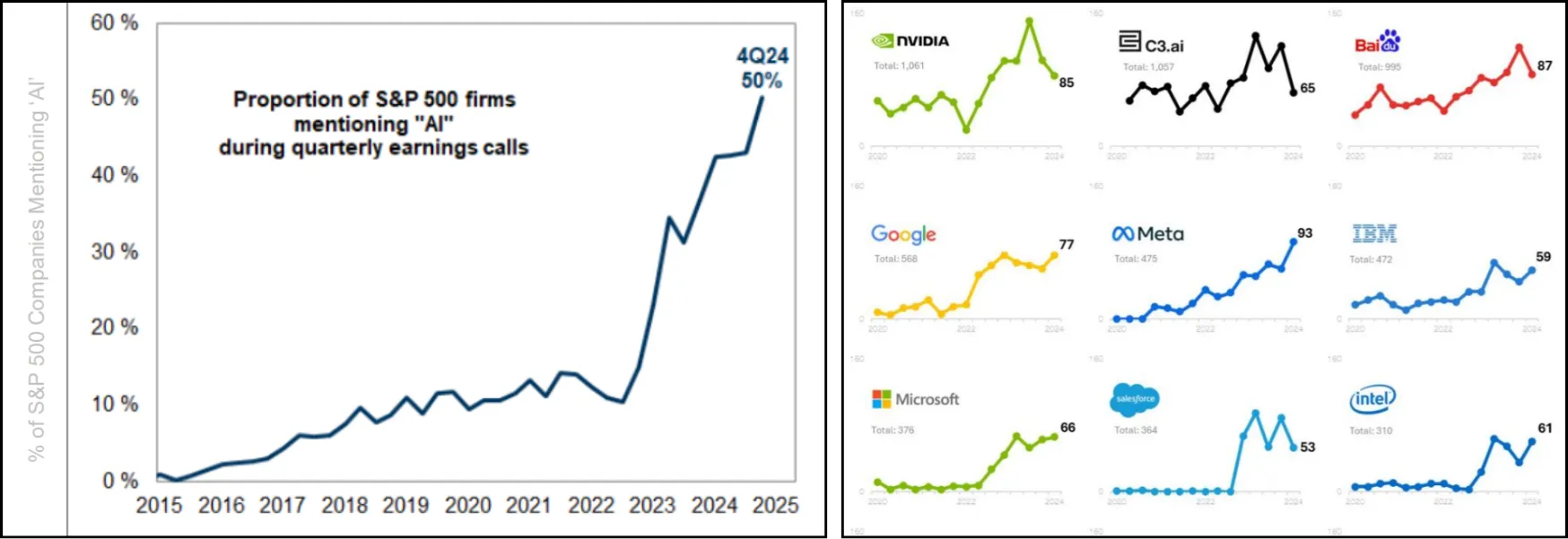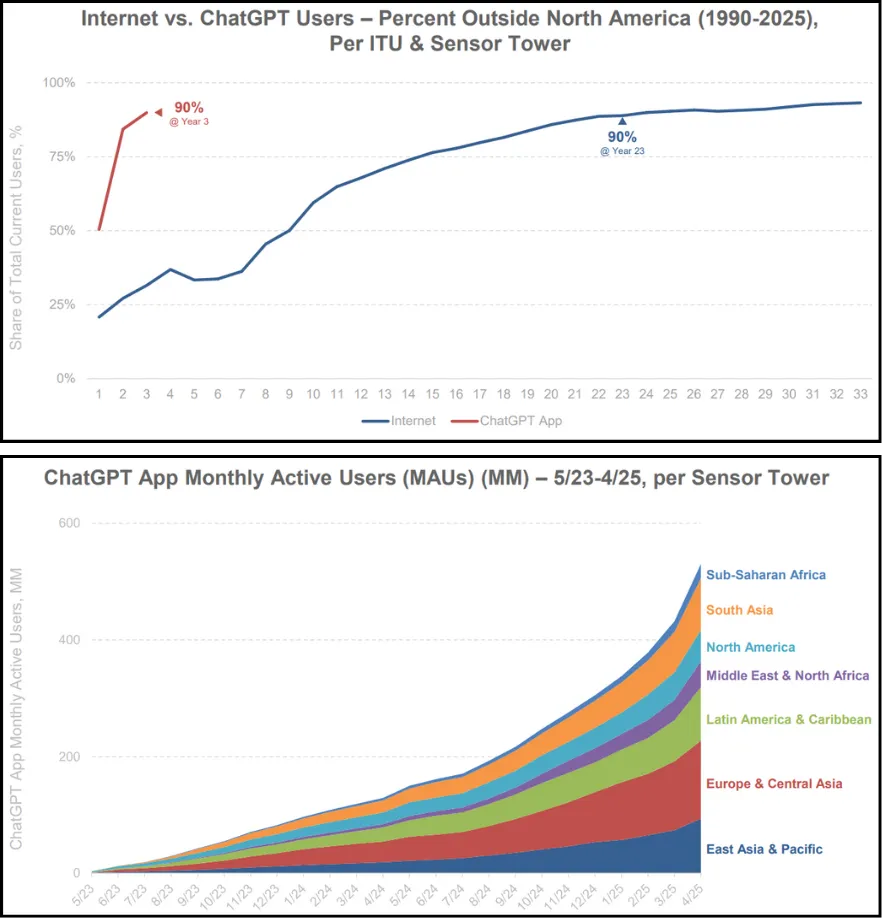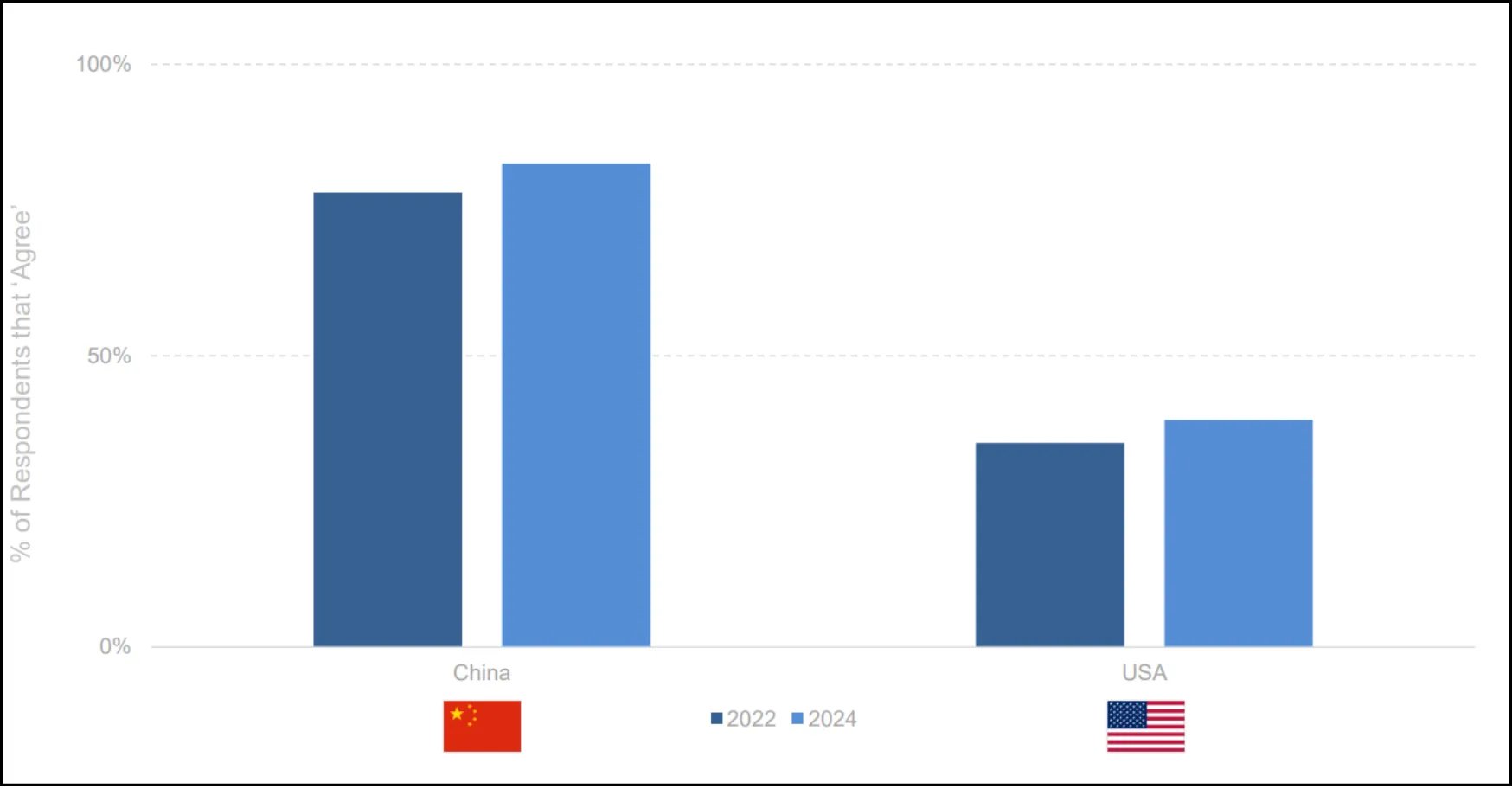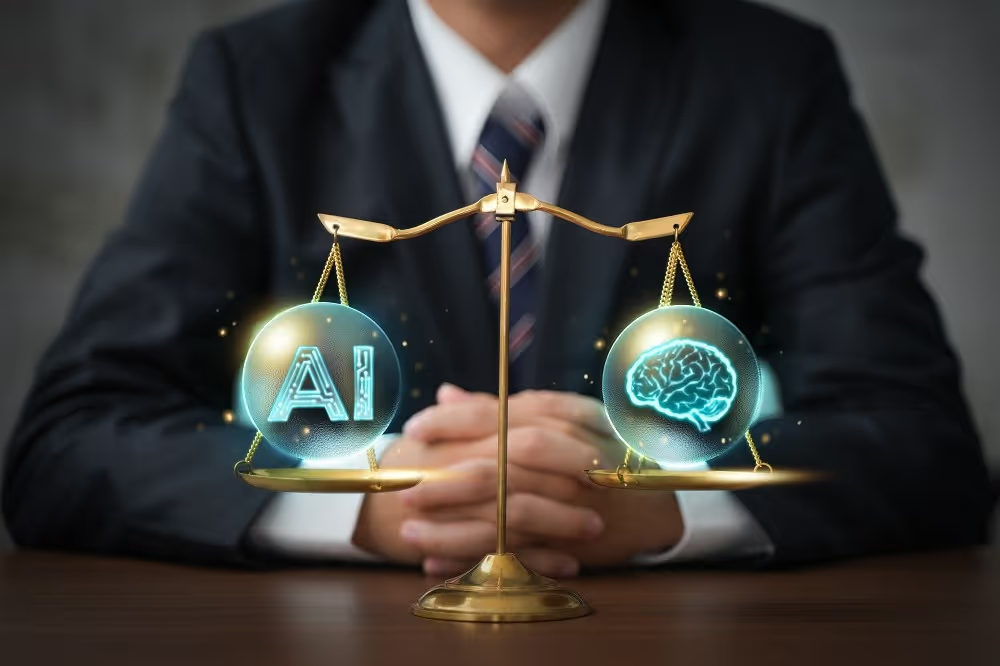
5 Reasons Why AI Is Unlike Any Previous Technological Innovation
AI isn’t just another innovation—it’s a global system shift that is unfolding faster, more broadly, and more profoundly than anything we’ve seen before. Discover why in this blog!

Reading time: 5 minutes
Why this AI wave is fundamentally different
In the world of tech, trends come and go at lightning speed. But every now and then, a shift emerges that changes everything. According to the latest AI trends report, that’s exactly what we’re witnessing. Artificial intelligence is not just a tool or an innovation—it’s a fundamental restructuring of how we work, communicate, create, and compete.
The BOND report— a comprehensive 340-page analysis — shows how AI is developing in an unprecedented way: faster, wider, and deeper than any previous tech revolution. Mary Meeker, known for her influential Internet Trends Reports, has long been one of the most trusted voices in the tech industry.
Not only is the technology itself growing exponentially, but adoption by businesses, governments, and consumers worldwide is outpacing even that of the internet and mobile technology.
So what makes this AI wave so extraordinary? In this article, we’ll explore five key differences between this transformation and earlier technological shifts. From adoption speed to global scale and geopolitical stakes—this isn’t a trend to sit out. On the contrary: now is the time to act.
1. The speed of adoption is unprecedented
AI is evolving faster than any previous technology. According to Meeker, AI adoption is happening at a rate far higher than that of the internet or mobile. While desktop internet took 12 years to reach 50% household adoption, and mobile took 6, AI is doing it in under 3.
That’s no coincidence: AI builds on decades of infrastructure, data, and digital distribution. Model training has grown by 260% annually since 2010, and the number of powerful models is skyrocketing. Tools like ChatGPT are being adopted faster than even Google was.

Graph showing growth in OpenAI users, subscribers, and revenue (Trends – Artificial Intelligence (AI), page 20)
2. Everyone is jumping in—from consumers to governments
What makes AI unique is its wide applicability. It’s not just startups and tech giants investing heavily in AI; established corporations and governments are also jumping on board at record pace. Over 50% of S&P 500 companies now mention AI in their earnings calls—up from just 10% when ChatGPT launched.
Notably, the focus is often on growth and new opportunities rather than just cost savings. Companies are exploring how AI can enhance customer engagement, productivity, and output—something we see reflected in our own Lumans projects.

Mentions of AI in meetings of S&P 500 companies and tech giants (Trends – Artificial Intelligence (AI), pages 64 and 69)
3. The AI revolution is global—not just a Silicon Valley party
Unlike previous tech waves that typically started in Silicon Valley and then spread, AI has been global from the start. Just three years after ChatGPT’s launch, over 90% of usage now comes from outside North America. Countries like India, Indonesia, Brazil, and Egypt are among the top users—and not just on the consumer side.
Thanks to the global availability of (mobile) connectivity, affordable hardware, and multilingual AI models, AI is now accessible to a much broader audience than past technologies. In emerging markets, people often have their first digital experience not through a browser or search engine—but through an AI assistant that speaks their native language.
For organizations, this means AI transformation is happening everywhere at once. International competition no longer just comes from the usual suspects but increasingly from local players who adopt AI creatively and quickly. If you operate internationally or in a multicultural market, you need to account for a customer base that thinks and acts AI-natively.

Overview of global AI usage (Trends – Artificial Intelligence (AI), pages 57 and 316)
4. The geopolitical stakes are sky-high
Unlike earlier technologies, AI is deeply entangled with geopolitics. The race for technological dominance between the U.S. and China is increasingly shaping the pace and direction of AI development. China is making rapid strides—not only in infrastructure and models but also in areas like industrial robotics.

Number of self-developed large-scale AI models by country (Trends – Artificial Intelligence (AI), page 282)
Public sentiment also differs greatly. Between 2022 and 2024, over 70% of Chinese citizens saw AI as more beneficial than harmful, compared to just 30–40% in the U.S. This optimism fuels adoption in China, while the U.S. sees more hesitation and regulation.

Percentage of citizens with a positive attitude toward AI (Trends – Artificial Intelligence (AI), page 299)
For businesses, this means AI decisions can’t just be technical or financial, they are strategic. Your choice of suppliers, standards, and data locations may directly impact compliance, market access, and reputation.
5. The disruption is in all sectors
AI isn’t changing just one sector, it’s changing everything. From software to healthcare, from logistics to creativity. And it’s doing so at a pace that’s hard to keep up with. Infrastructure costs have plummeted, making AI usage 99% cheaper in just two years. What would cost dollars yesterday, now costs cents.
This is sparking an explosion of new products, services, and business models. Organizations are being forced to rethink their positioning, strategy, and ethical frameworks from the ground up.
Finally: what does this mean for your organization?
Whether you’re a small business owner or a freelancer, the AI wave is not just a hype, it’s a fundamental technological shift. And as the BOND report shows, speed is essential. Waiting means falling behind.
At Lumans, we help businesses prepare strategically for this transition. Whether it’s AI implementation, knowledge-sharing workshops, or custom software development—we make AI concrete, understandable, and actionable.
Want to learn more about how we support ethical AI implementation? Visit our website and discover our approach!**
This article is optimized with ChatGPT


